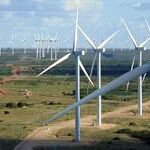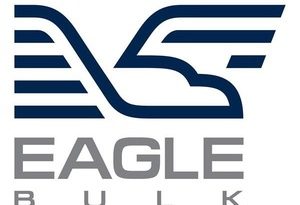How to Profitably Create Carbon-Negative Energy from Biomass
Energy Disrupter
Combining complementary technologies can enable a profitable transition to a low-carbon economy.
ADVERTISEMENT
A major opportunity has emerged to generate reliable power while capturing and sequestering carbon dioxide (CO2) from the atmosphere, and it can be implemented on a global scale. This is now possible due to advances in four key technology areas that can be combined into one larger system: biomass or fossil fuel power generation with carbon capture, direct air capture (DAC), energy storage and renewable energy. Together, these technologies can provide reliable power to the electrical grid while generating substantial negative carbon emissions. In addition to scaling up renewable energy, this will help the hydrocarbon-based energy sector transition to and participate in a low-carbon economy. If implemented around the world, this approach could reduce carbon emissions by billions of tons per year, while creating major economic opportunities.
Utilizing biomass for power generation enables an even greater negative carbon emissions than when using fossil fuels, since biomass is already carbon neutral. Additionally, while generating energy via biomass, another valuable product can be produced: biochar. Several commercial-scale systems are now available that can produce both energy and biochar at the same time. Biochar is produced by heating the biomass in an oxygen-limited environment using some of the energy released from this biomass. After this biochar is produced, it has many uses, including significantly increasing the productivity of soil for growing food.
Since producing biochar from biomass and incorporating it into soil is an internationally recognized way of removing carbon from the atmosphere, substantial money can be earned by creating this biochar. Even more beneficial than creating biochar is combining it with nutrients and utilizing it in soil. For example, a 2019 study found that biochar combined with compost increased average crop yield significantly—by 40% compared with the control, which was compost without biochar.
Many companies have committed to net zero targets over the next few decades. For instance, over 200 companies have committed to net zero by 2040, and 21% of 2,000 of the world’s largest public companies, representing sales of nearly $14 trillion, now have committed to net zero by 2050. These companies will need to purchase carbon emission credits to meet their respective commitments. Because of this, demand for these credits can be expected to grow rapidly, which can generate significant revenues for companies implementing these combined power systems with carbon capture and storage (CCS). Substantial revenues can be earned by companies that generate reliable electricity and create negative emissions at the same time using this combination of technologies.
In addition to being stored in the ground, captured CO2 by industrial carbon capture and DAC can be utilized in several ways, including vertical farming, increasing the strength of concrete, and methanol production. The rapid growth of carbon utilization opens up major economic opportunities such as the growth of local industries and the expansion of international markets and trade opportunities. Carbon utilization markets are estimated to reach $800 billion to $1.1 trillion by 2030 in the U.S., making it a profitable component of the energy transition. As reliable sources of CO2 become available around the world, it can be expected that utilization of this resource will increase.
By including renewable energy sources like wind and solar in the combination of technologies, it provides a cost-effective source of inexhaustible energy while also generating new jobs and economic opportunities. Combining renewable power generation and energy storage with carbon capture and DAC enables reliable power to be supplied to the electrical grid, even when wind and solar farms are not generating sufficient power for many days at a time. The DAC system helps in this regard, as it can be turned down or off when necessary to allow more power to be supplied to the grid. It also helps maximize utilization of the power that is available, leading to a more profitable facility.
While the cost of DAC is currently quite high, it is expected to quickly decline. For example, the cost of capturing and sequestering a metric ton of CO2 in the new plant by Climeworks in Iceland was reported to be in the range of $600 to $800. There are now several other companies developing DAC technologies, some of which are indicating that they can capture CO2 for less than $100 per metric ton when their respective technology is implemented on a commercial scale.
Facilities that enable long-term carbon storage have been rapidly growing, and there is now increased availability of climate finance such as carbon-tech funding. This, combined with the technologies mentioned above, has created many new business opportunities around the world that can help substantially reduce global carbon emissions, create jobs and enable economic growth at the same time.
An important feature of this combination of technology areas is it is not dependent on any one company’s technology. As a result, organizations that want to implement this combination of technologies have many choices and can and should choose their best options.
Progress can be further accelerated by organizations taking the initiative to develop projects in collaboration with these relevant technology communities and accessing the available financing. This would result in a faster rate of development and scale-up of technologies to reduce carbon emissions. Several funding sources are available to accelerate technology development and scale-up, such as venture capital, government grants and related incentives, private grant funding, crowdfunding and loans. To help companies obtain capital to build a facility, online platforms like Puro-Earth help facilitate long-term off-take agreements for the carbon that is expected to be captured and stored by the facility. Furthermore, to make investments in these substantial projects more attractive to investors, they can be refinanced with green bonds after they are operational and generating revenue.
One of the easiest and most profitable ways of benefiting from this combination of technologies is to upgrade existing biomass-fueled power plants. These plants already have a source of biomass,
material handling equipment and an offtaker for the power generated. The existing biomass-fueled power plants can be upgraded with new processing equipment so that these plants can produce biochar and more electrical power by combining them with renewable energy farms and energy storage. When it makes economic sense, carbon capture, hydrogen production and DAC can be included in a facility. The net result for existing biomass-fueled power plant operators is greater profits, substantial negative carbon emissions and helping to create a more sustainable world for us all.
Author: Paul Stevers
Founder and President
Think Renewables Group Inc.
647-548-6301
Seversp2@thinkrenewables.com
















